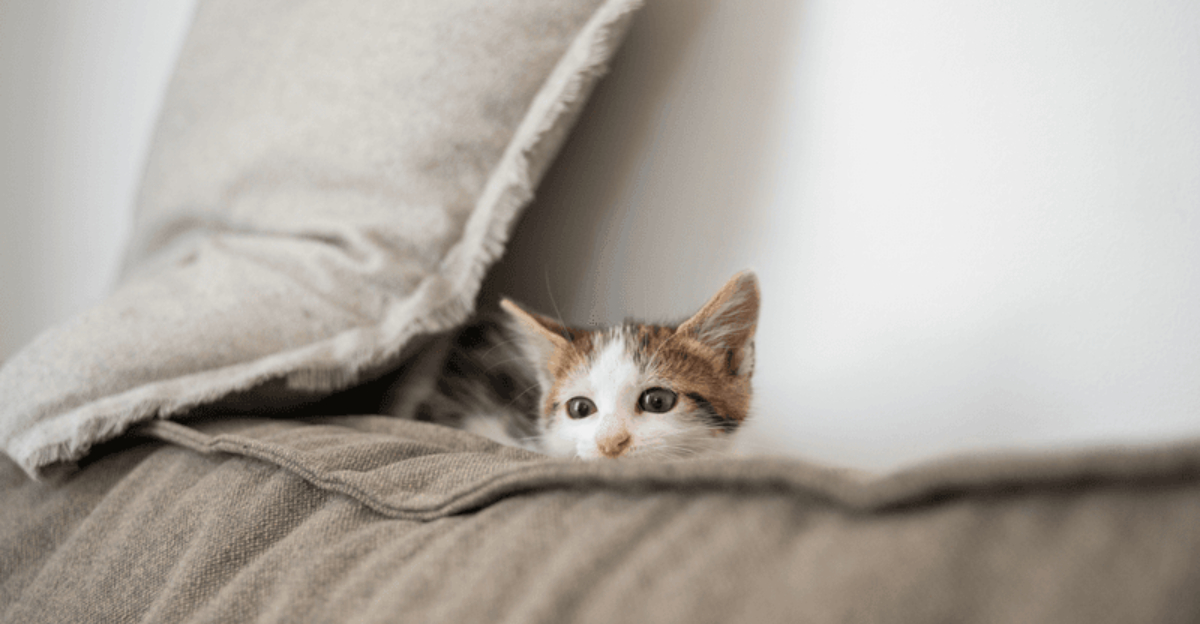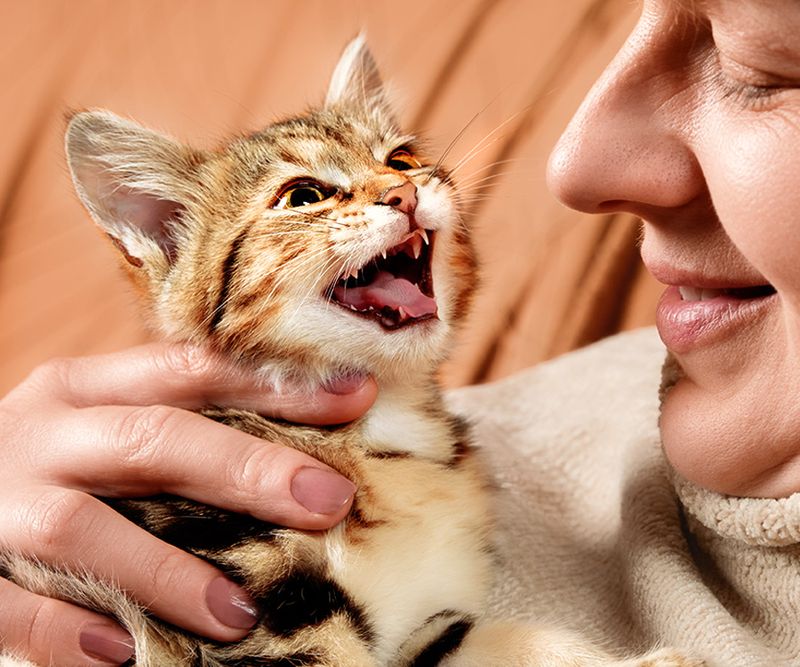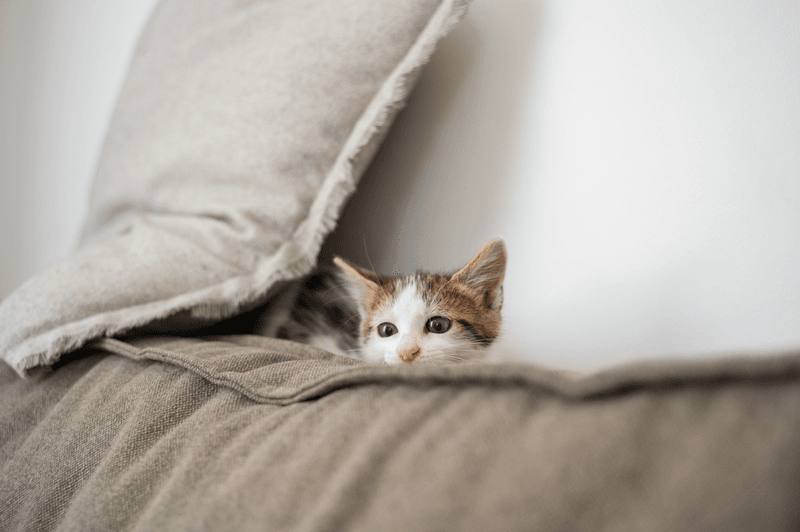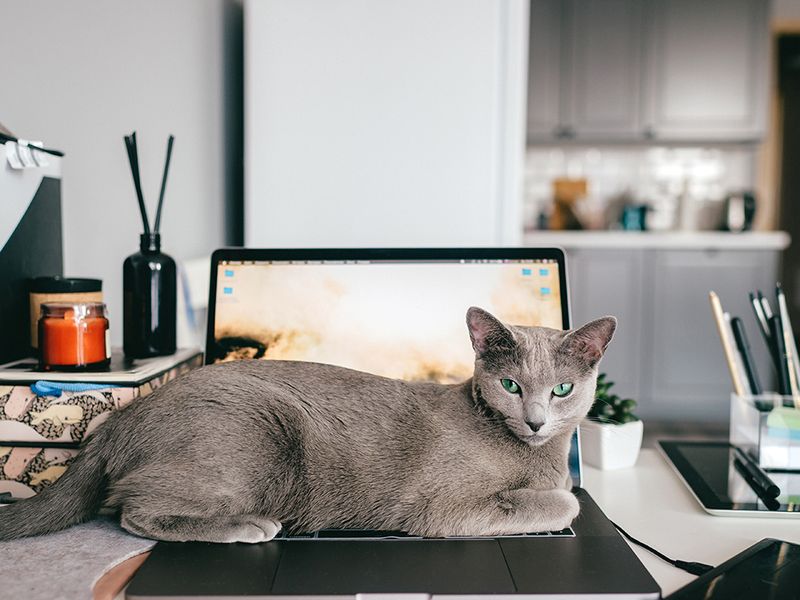📖 Table of Content:
Cats may appear aloof, mysterious, or independent, but any seasoned cat owner knows there’s far more going on behind those slitted eyes. Behind the purrs and headbutts lies a master tactician subtly shaping your behavior without your even realizing it. If you’ve ever felt like your cat is the one calling the shots in your household, you’re probably right—and they’ve likely been training you from day one.
What makes cats such stealthy manipulators is their deep understanding of reward systems—despite never reading a psychology book. They repeat behaviors that get results and abandon those that don’t, turning their human companions into treat dispensers, door-openers, and 24/7 entertainment. Over time, their small cues and habits mold your routines and responses into precisely what they want.
This feline finesse isn’t done with force—it’s done with charm, subtlety, and just enough persistence to be effective. Whether it’s getting you to wake up early, fill the bowl on time, or rearrange your furniture, your cat is probably pulling strings you didn’t even know existed. Let’s peel back the curtain and explore seven clever tricks your cat is using to train you—without you even realizing it.
1. Meowing for What They Want
Rather than a casual sound, that seemingly innocent meow is your cat’s deliberate communication tool—and it’s aimed squarely at you. In the wild, adult cats rarely meow to one another, but domestic cats have developed an entire symphony of vocalizations specifically for interacting with humans. Each chirp, trill, or cry is a tailored prompt, whether it’s for food, attention, or access to another room. By responding to these cues—feeding them, petting them, or doing their bidding—you reinforce the behavior and teach them that meowing is a reliable method of control. Over time, your cat refines the pitch and tone to suit specific needs, and you, the human, respond as programmed. Eventually, they don’t even need to be near the food bowl—they just have to vocalize from across the room. Just like that, you’ve become fluent in Catlish—and very well trained.
2. Pawing at Objects or You
Gentle swipes at your leg, a soft pat on your hand, or even the dramatic knock-off-the-counter move are far more than quirks—they’re calculated tactics. These gestures are your cat’s way of initiating interaction or prompting a specific reaction, whether it’s playtime, feeding, or simply attention. If you instinctively respond, even with a “no” or scolding, your cat registers that the paw tap gets noticed—and therefore works. Cats quickly figure out what actions get your eyes off the screen or lure you into the room, and they use these cues like buttons on a remote control. Over time, these small, cute interactions turn into effective tools for controlling your attention span. Even negative attention is still attention, and your cat doesn’t mind which kind it is—as long as it gets you moving. You’ve just been gently nudged into submission.
3. The Strategic Litter Box Protest
Ever found a “surprise” outside the litter box? This isn’t random. Cats may skip the litter box to protest changes in their environment or to tell you something is wrong. When you react by cleaning more or changing its location, you’re reinforcing that this tactic gets results. It’s not just about cleanliness; it’s about communication. Cats know that you’ll respond to their message, making it an effective way to get your attention. This behavior highlights their strategic thinking and ability to adapt.
4. The Morning Wake-Up Call
Cats learn your schedule and often start nudging you awake earlier and earlier. Whether it’s hunger or just wanting playtime, if you comply, you’re being conditioned to rise on their terms—not yours. These early wake-up calls might seem innocent, but they’re a calculated strategy. Over time, you adjust your sleep patterns to accommodate their desires. Your cat becomes the master of your morning routine, dictating when the day begins. This clever tactic keeps you in tune with their needs, ensuring their dominance over your schedule.
5. The Disappearing Act
Instead of confrontation, cats often disappear when they disapprove of something in their environment—be it guests, loud noises, or a change in routine. Their vanishing act isn’t fear alone; it’s a form of silent protest and control. When you start altering your home environment to coax them out—closing doors, lowering volume, or clearing a quiet space—you’re responding to their passive resistance. Cats quickly pick up on which absences prompt change and use that to silently shape your behavior. Over time, you begin to preemptively adjust conditions to suit their comfort before they even flee. The act of disappearing becomes a powerful training mechanism in the feline playbook. In their eyes, avoidance is action.
6. Slow Blinks for Manipulation
That slow, dreamy blink your cat gives you might seem like a sweet sign of trust—and it is—but it’s also a tool for influence. When your cat blinks at you and you blink back or soften your tone, they’ve made an emotional connection that they can use again. The behavior teaches you that calm body language earns gentle affection in return, which encourages your cat to use it more often. In essence, it becomes a subtle way for your cat to control the emotional energy in the room. This calm, repeated interaction deepens your bond while also shaping how and when you respond to them. Your cat has taught you to react to softness with softness. And just like that, they’re managing your mood.
7. Sitting on Important Things
Open a laptop, book, or newspaper, and your cat is suddenly there—right in the middle of it. This isn’t random; it’s a deliberate way to redirect your attention from the object to them. They recognize what holds your focus and make sure to insert themselves between you and that distraction. Over time, if you pause what you’re doing, pet them, or even move the object aside to accommodate them, you reinforce that this tactic is effective. Your cat learns to associate important objects with high reward value, and therefore targets them consistently. Rather than demand attention outright, they elegantly interrupt your priorities. The result? You’ve prioritized them without even thinking about it.







